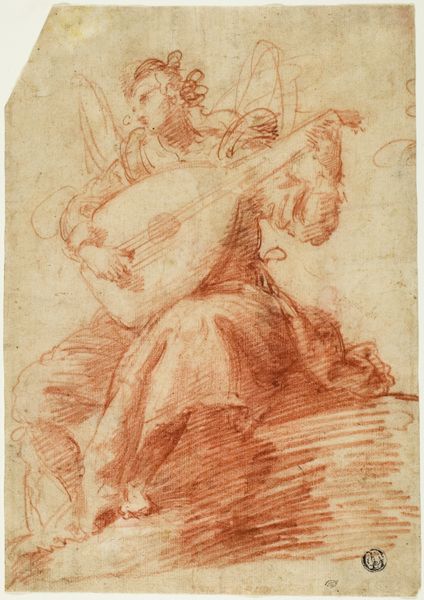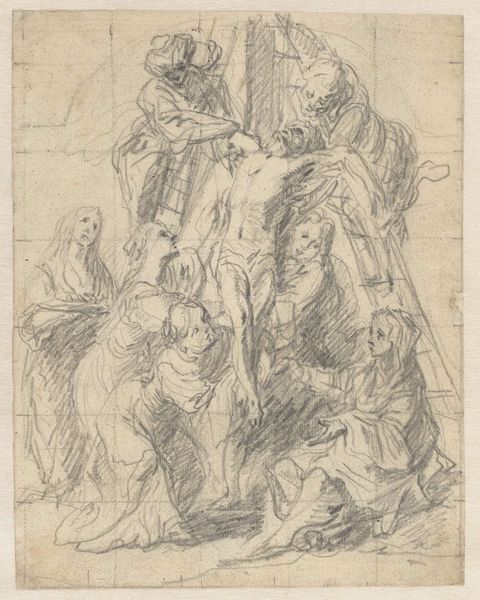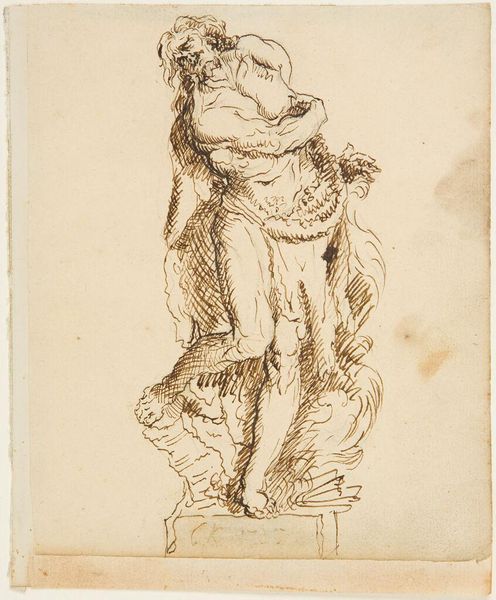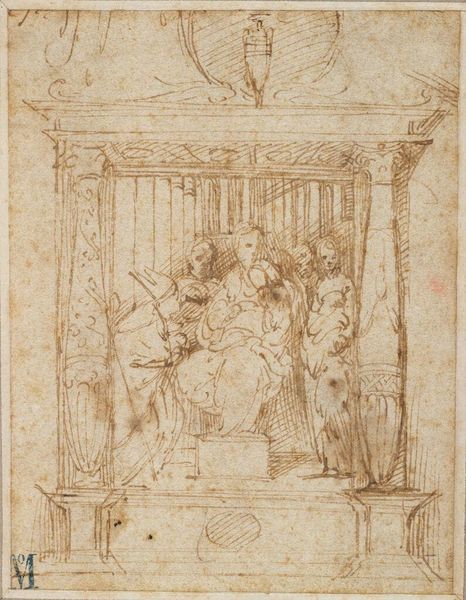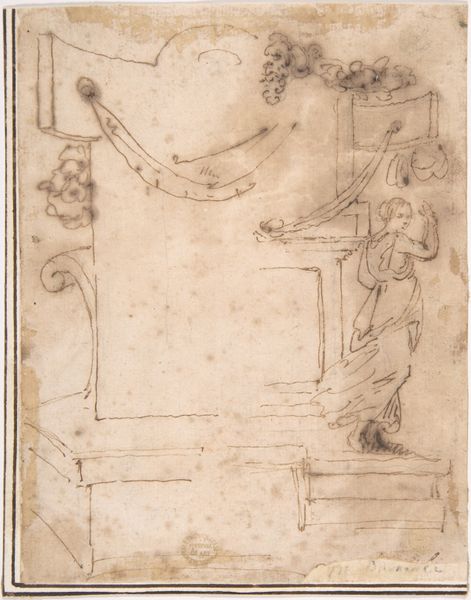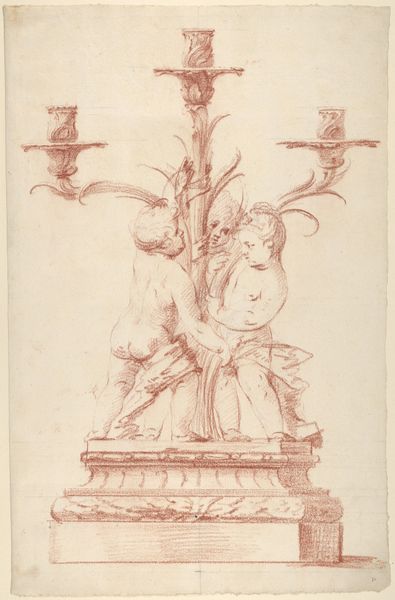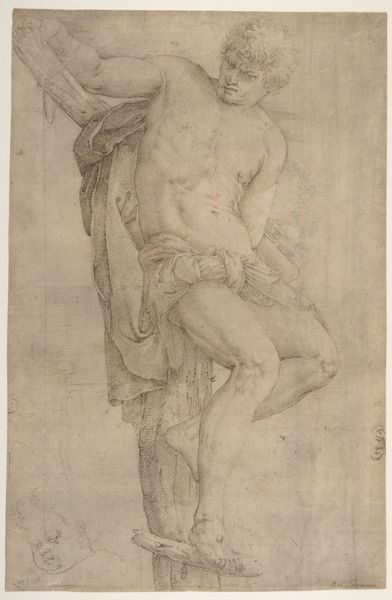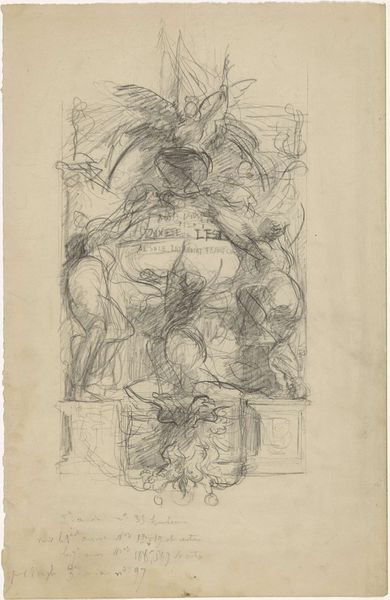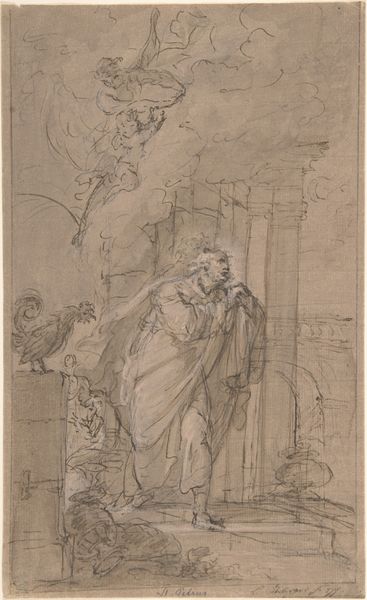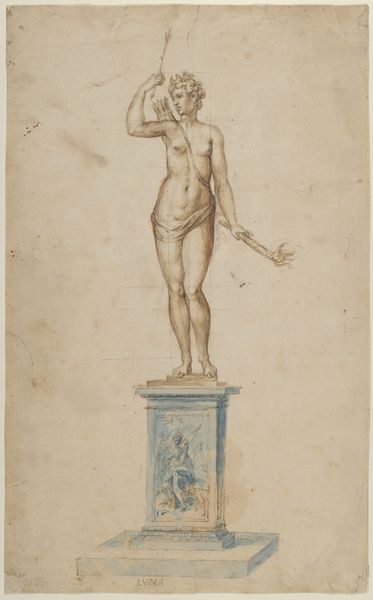
drawing, pencil
#
drawing
#
pencil sketch
#
charcoal drawing
#
figuration
#
11_renaissance
#
coloured pencil
#
pencil
#
history-painting
#
academic-art
#
italian-renaissance
Dimensions: height 447 mm, width 355 mm
Copyright: Rijks Museum: Open Domain
Curator: This drawing in the Rijksmuseum is titled "The Flagellation of Christ" and is attributed to Sebastiano del Piombo. It dates from somewhere between 1500 and 1547. Editor: It's immediately striking—the raw emotion captured in such simple lines of pencil and colored chalk, particularly the figure of Christ bound to that fluted column. Curator: Indeed. Del Piombo, an Italian painter, was heavily influenced by both the Venetian School and the Roman School, and this drawing exemplifies the Renaissance interest in the human form. Think of the commission it precedes: images of religious stories to instruct or remind church goers how they must atone for sin, so his image can be considered an early step in propagating these themes and consolidating institutions like the church. Editor: Precisely. But look at the composition. The muscularity is clear and classical, but the hazy unfinished forms surrounding him hint at the turmoil and violence inherent in the scene. Del Piombo masterfully uses line to define the weight and form of Christ's body. The viewer’s focus hones in on his figure thanks to the column framing him. The rough sketches lend the figure a brutal presence, more so than it may have if the work was finished and finely painted. Curator: Don't overlook the staging. There are some indications of setting, in the lower quarter—there is an indicated shallow relief, that is in part echoed by an elliptical arc above. I would hazard that this would likely represent part of the architectural features that represent Pontius Pilate’s house and judgement arena. What is curious to me are the faded and sketched out figures which look ghostly around our main action. This does seem to confirm that this work is not just about Christ alone but must be contextualised and completed in conjunction with these shadowy figures. Editor: Good point, the rough layout has that impact. In that unfinished quality you can see the process itself: the artist working through compositional problems and building up his image. And of course, even unfinished it expresses that brutal idea well enough. It certainly gets the core point across that the image would have achieved when commissioned. Curator: True, despite the roughness there's great expressive and symbolic force. A small sketch can reflect and amplify cultural concerns. Editor: Agreed. Looking closely certainly has highlighted both its stark emotional quality and its underappreciated symbolic power.
Comments
No comments
Be the first to comment and join the conversation on the ultimate creative platform.
